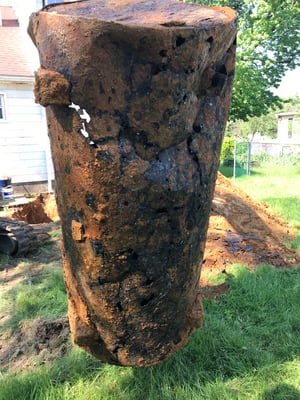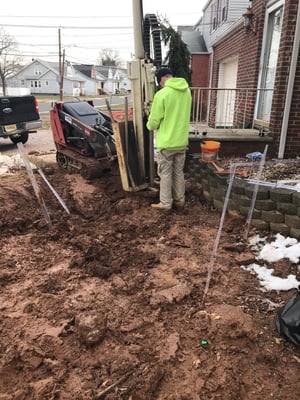Questions that are quite often asked “Do I have a good underground oil tank or a bad one?”, or “What is the difference between a good or bad underground oil tank?”. Answering questions regarding underground oil tanks is an easy one, if your tank has been under ground since tanks started being buried (late 1940’s to early 1950’s), then there is no good or bad tank – you need to remove that oil tank. The tank has exceeded any functional and reasonable life expectancy.
In situations when the underground oil tank is still in use and older , the oil tank should be removed and replaced with an aboveground oil tank. Ask yourself a simple question, “Would you buy the house with an oil tank that old in the ground?”.

Anything subject to corrosion such as a metal tank deposited in the ground has a finite life span, time will cause any underground oil tank to leak. There are no warrant
ies for oil tanks that were placed into the ground over 40/20 years ago. Warranties on oil tanks that are bought today have only a 1 to 10-year warranty. Also, you most likely do not even have insurance that would cover an oil tank leak at this point. Insurance companies started to negotiate covering oil tanks and began removing coverage when the carriers suffered huge claims from underground oil tanks leaking years ago.
Why remove your underground oil tank? You may not see the tank or use the tank but the longer it sits underground the more time it has to rust and for holes to occur, causing oil or residual oil to seep into the ground. Many oil tanks that Curren Environmental remove were in use and found to be leaking and showed no evidence of leakage to the owner prior to removal.
What if you decided to sell your property? Today with that oil tank in the ground, the “buyer” would have a difficult time getting a mortgage and homeowners insurance. You underground oil tank is not “good” sitting underground waiting to for removal. Again, consider if you would buy the home again knowing what you know now about oil tanks.
How would yo u know if you had a “bad” oil tank? You won’t know anything about that oil tank until its removed and soil samples are provided. Soil samples are grabbed directly beneath the oil tank once it has been removed. Those soil samples are taken to an independent lab, analyzed and a report is provided to the client discussing if those soil samples are Non-Detect (ND) or above standards. More information can be found here regarding sampling. Each state has different regulations regarding how much oil is allowed in the soils. NJ is one of the strictest states regarding oil tank removal and contaminated soils.
u know if you had a “bad” oil tank? You won’t know anything about that oil tank until its removed and soil samples are provided. Soil samples are grabbed directly beneath the oil tank once it has been removed. Those soil samples are taken to an independent lab, analyzed and a report is provided to the client discussing if those soil samples are Non-Detect (ND) or above standards. More information can be found here regarding sampling. Each state has different regulations regarding how much oil is allowed in the soils. NJ is one of the strictest states regarding oil tank removal and contaminated soils.
If you know the age of your oil tank, there were differences between the 1950’s tanks as opposed to the 1970’s tanks. The steel from the 1950’s was stronger and thicker, meaning if the tank was built and put in the ground during that era, the steel may last longer. But remember, if it was put under ground that was over 60-70 years ago! Even if that tank is no longer in use, why keep it in the ground? Nothing is meant to last forever – well maybe plastic water bottles.
There are no good or bad underground oil tanks, just underground oil tanks that need to be removed. To learn more on the removal of your underground tank, soil sampling and costs contact Curren Environmental today by filling out the Form to the right or by calling us now.



